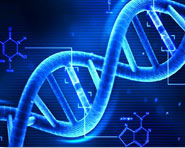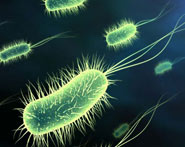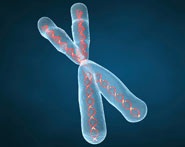


 النبات
النبات
 الحيوان
الحيوان
 الأحياء المجهرية
الأحياء المجهرية
 علم الأمراض
علم الأمراض
 التقانة الإحيائية
التقانة الإحيائية
 التقنية الحيوية المكروبية
التقنية الحيوية المكروبية
 التقنية الحياتية النانوية
التقنية الحياتية النانوية
 علم الأجنة
علم الأجنة
 الأحياء الجزيئي
الأحياء الجزيئي
 علم وظائف الأعضاء
علم وظائف الأعضاء
 الغدد
الغدد
 المضادات الحيوية
المضادات الحيوية|
Read More
Date: 11-1-2017
Date: 15-1-2017
Date: 31-7-2016
|
A special characteristic of cell growth and cell division is cell differentiation, which refers to changes in physical and functional properties of cells as they proliferate in the embryo to form the different bodily structures and organs. The following description of an especially interesting experiment helps explain these processes.
When the nucleus from an intestinal mucosal cell of a frog is surgically implanted into a frog ovum from which the original ovum nucleus was removed, the result is often the formation of a normal frog. This experiment demonstrates that even the intestinal mucosal cell, which is a well-differentiated cell, carries all the necessary genetic information for development of all structures required in the frog’s body.
Therefore, it has become clear that differentiation results not from loss of genes but from selective repression of different gene promoters. In fact, electron micro graphs suggest that some segments of DNA helixes that are wound around histone cores become so condensed that they no longer uncoil to form RNA molecules. One explanation for this scenario is as follows: It has been supposed that the cellular genome begins at a certain stage of cell differentiation to produce a regulatory protein that forever after represses a select group of genes. Therefore, the repressed genes never function again. Regardless of the mechanism, mature human cells produce a maximum of about 8000 to 10,000 proteins rather than the potential 30,000 or more that would be produced if all genes were active.
Embryological experiments show that certain cells in an embryo control differentiation of adjacent cells. For instance, the primordial chorda-mesoderm is called the primary organizer of the embryo because it forms a focus around which the remainder of the embryo develops. It differentiates into a mesodermal axis that contains seg mentally arranged somites and, as a result of inductions in the surrounding tissues, causes formation of essentially all the organs of the body.
Another instance of induction occurs when the developing eye vesicles come in contact with the ectoderm of the head and cause the ectoderm to thicken into a lens plate that folds inward to form the lens of the eye. Therefore, a large share of the embryo develops as a result of such inductions, one part of the body affecting another part, and this part affecting still other parts.
Thus, although our understanding of cell differentiation is still hazy, we are aware of many control mechanisms by which differentiation could occur.



|
|
|
|
لشعر لامع وكثيف وصحي.. وصفة تكشف "سرا آسيويا" قديما
|
|
|
|
|
|
|
كيفية الحفاظ على فرامل السيارة لضمان الأمان المثالي
|
|
|
|
|
|
|
قسم التربية والتعليم يطلق الامتحانات النهائية لمتعلِّمات مجموعة العميد التربوية للبنات
|
|
|